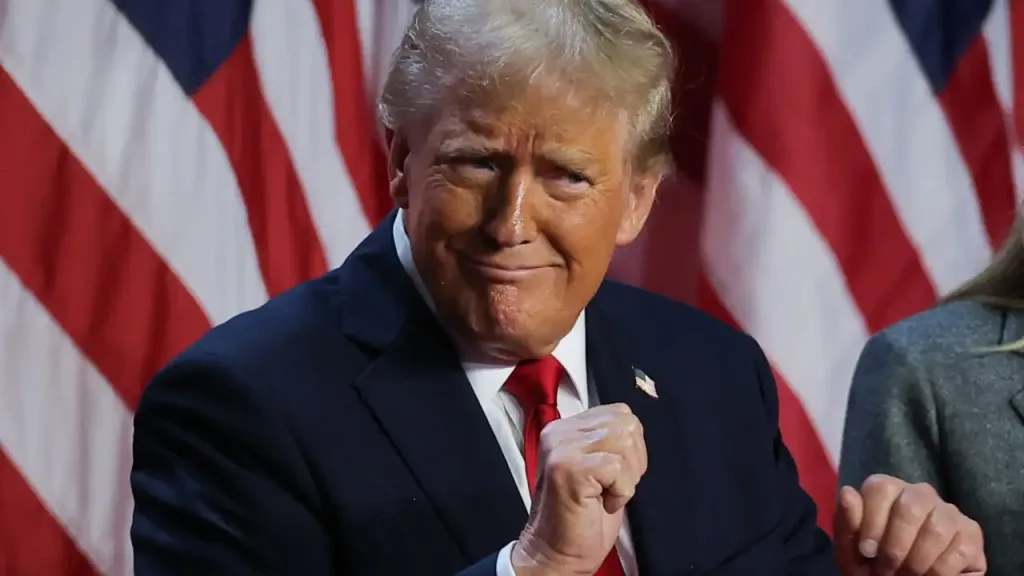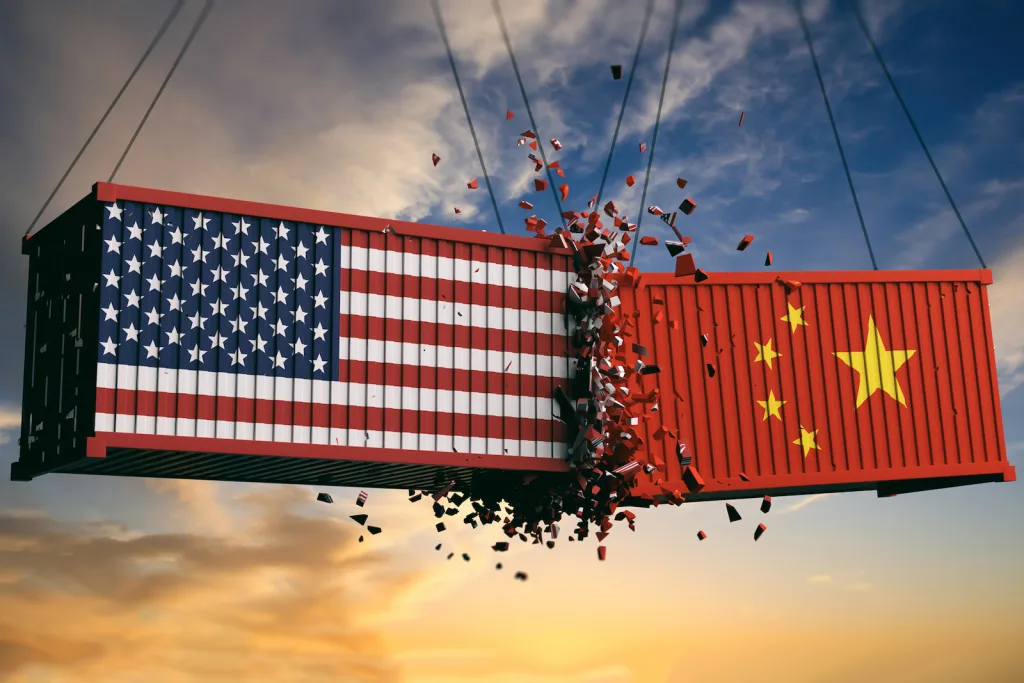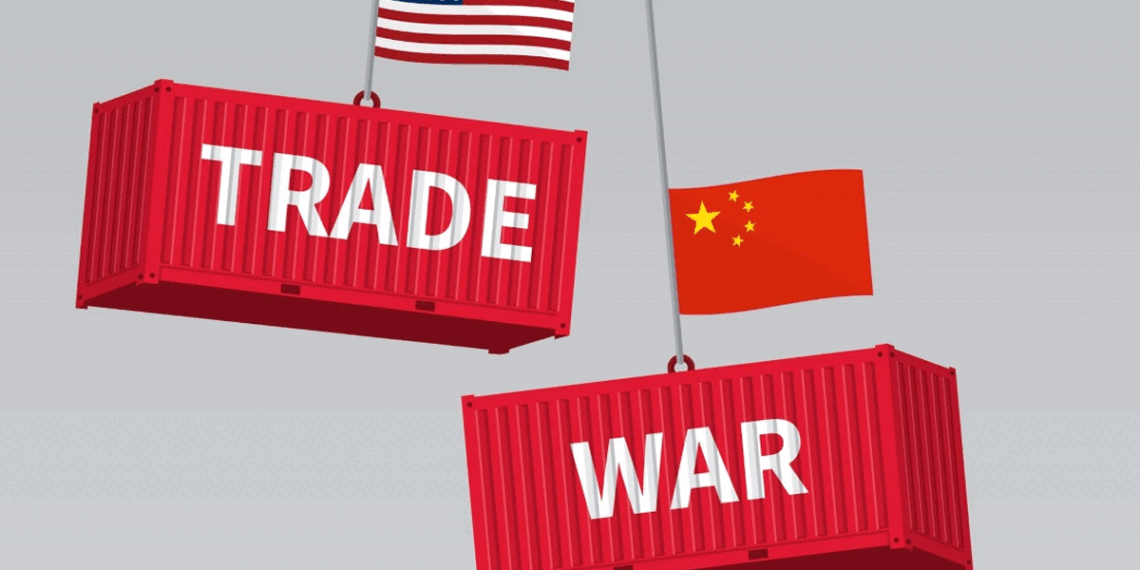In a dramatic escalation of tensions between the world’s two largest economies, the Trump administration has imposed a staggering 104% tariff on Chinese imports, effective April 9, 2025. This unprecedented move has sent shockwaves through global markets and raised serious concerns about the potential for a worldwide trade war with far-reaching economic consequences.
Table of Contents
Breaking: Trump Imposes 104% Tariff on Chinese Imports
The White House announced a 104% tariff on Chinese imports, effective immediately at midnight. This dramatic increase resulted from an initial 34% tariff proposal, followed by an additional 50% duty in response to Chinese retaliation, culminating in the 104% rate that has stunned economic analysts worldwide.
“Countries are welcome to bring their best offers to the table,” stated White House Press Secretary Karoline Leavitt, positioning these extreme measures as a negotiation tool rather than a permanent economic policy. The announcement came after China refused to comply with Trump’s deadline to remove its own 34% retaliatory tariffs, instead vowing to maintain them.
Economists warn that the 104% tariff could trigger significant price increases for American consumers, despite the administration’s claims that the measures will protect domestic manufacturing. A Reuters/Ipsos poll indicates that 75% of Americans already expect higher prices as a direct result of these tariffs.

Escalation of US-China Trade War Threatens Global Economy
The US-China trade war has reached unprecedented levels with the implementation of these new tariffs. What began as targeted measures has now evolved into a full-scale economic confrontation between the world’s two largest economies, with potential consequences for global growth and stability.
“This represents a significant escalation beyond anything we’ve seen in modern trade relations,” said Dr. Eleanor Chen, Professor of International Economics at Georgetown University. “The US-China trade war has entered territory that threatens to undermine the entire global trading system.”
The escalation of the US-China trade war has prompted urgent diplomatic efforts from other nations, with reports indicating that over 70 countries have approached the White House to begin negotiations. However, the administration appears to be prioritizing “tailored deals” with allies like Japan and South Korea while deliberately deprioritizing China.
Impact of China Tariffs on Global Supply Chains
The new China tariffs represent the highest rates imposed by the United States in modern history, creating immediate disruptions across global supply chains. Companies that rely on Chinese manufacturing are scrambling to adjust their operations, with many facing difficult decisions about absorbing costs, raising prices, or seeking alternative suppliers.
“We’re already seeing chipmaker Micron implementing tariff-related surcharges, U.S. clothing retailers delaying orders, and widespread hiring freezes,” noted Michael Rodriguez, supply chain analyst at Morgan Stanley. “These China tariffs are forcing companies to completely rethink their global operations.”
Several industry groups have expressed concern about the impact of China tariffs on their supply chains, warning that the disruptions could take months or even years to resolve. The ripple effects are expected to impact everything from consumer electronics to automotive manufacturing, with potential shortages and price increases across multiple sectors.

Trade War Implications for Consumers and Businesses
The trade war implications extend far beyond just the United States and China. Consumers worldwide can expect higher prices for a wide range of goods, while businesses face uncertainty about future trade policies and potential retaliatory measures.
“Understanding the trade war implications requires examining both short-term market reactions and long-term structural changes,” explained Sarah Williams, Chief Economist at Global Trade Partners. “We’re likely to see immediate price increases, followed by more fundamental shifts in global supply chains as companies seek to reduce their exposure to US-China trade tensions.”
For American businesses, the implications are particularly complex. While some domestic manufacturers may benefit from reduced Chinese competition, many others rely heavily on Chinese components or sell significant portions of their products to Chinese consumers. The net effect is likely to be negative for most sectors, with particular concern for agriculture, technology, and consumer goods.
Trump Policy on China Signals Shift in International Relations
The Trump policy on China has consistently emphasized addressing trade imbalances, but the latest measures represent a significant hardening of this approach. The administration appears to be moving away from multilateral negotiations and toward a more confrontational stance, with potential implications for diplomatic relations beyond just trade.
“The latest tariff announcement reinforces the confrontational nature of the Trump policy on China,” said Dr. James Wilson, Director of the Center for International Trade Studies. “This represents a fundamental shift in how the United States approaches not just economic relations with China, but its entire foreign policy framework.”
Critics and supporters alike are debating the effectiveness of the Trump policy on China, with some arguing that tough measures are necessary to address longstanding issues, while others warn that the approach risks dangerous escalation with few tangible benefits.

Historical Context of the US-China Trade War: A Timeline
To understand the current situation, it’s important to consider the historical context of the US-China trade war. The relationship between these two economic powers has evolved significantly over the past several decades:
- 1979: Establishment of formal diplomatic relations between the US and China
- 2001: China joins the World Trade Organization
- 2018: Initial Trump tariffs on Chinese goods
- 2020: Signing of the Phase One trade deal
- 2025: Implementation of 104% tariffs
Since China’s entry into the WTO, U.S. imports from China increased from approximately $100 billion in 2001 to over $400 billion in 2023. This dramatic growth has been accompanied by concerns about the impact on U.S. manufacturing and growing national security issues regarding technology transfer.
The Trump China tariff trade war has entered a new phase with this dramatic escalation in import duties, building on tensions that have been growing for years but have now reached a critical point.
Global Market Reaction to Tariffs Shows Widespread Concern
The announcement of the 104% tariff has triggered substantial market volatility worldwide. The S&P 500 has experienced an 18.9% drop from its recent high, representing a staggering $5.8 trillion in market value loss. Asian markets have also been hit hard, with Japan’s Nikkei 225 falling 3.9% and Hong Kong’s Hang Seng declining 1.8%.
“This is the deepest four-day loss for the S&P 500 since its inception in the 1950s,” noted financial analyst Robert Thompson. “The market reaction reflects serious concerns about the potential for a global economic slowdown or even recession as a result of these trade tensions.”
Financial experts have provided concerning projections, with Goldman Sachs estimating a 45% chance of recession within the next 12 months. JPMorgan Chase’s CEO has also warned of a significant growth slowdown, adding to the chorus of voices expressing alarm about the economic outlook.
Looking Ahead: Potential Paths Forward
As the situation continues to develop, several potential scenarios could unfold:
- China could implement retaliatory measures, further escalating the trade war
- Diplomatic negotiations might resume, potentially leading to a de-escalation
- Other countries could be drawn into the conflict, expanding its scope
- Market pressures might force policy reconsideration
The Trump administration has indicated that it remains open to negotiations, but with China vowing to “fight to the end” against what it perceives as U.S. blackmail, the path to resolution remains unclear.
What is certain is that the implementation of the 104% tariff represents a significant shift in U.S. trade policy, with far-reaching implications for global trade relations, economic stability, and international diplomacy. As businesses, consumers, and governments worldwide adjust to this new reality, the full impact of these measures will continue to unfold in the coming weeks and months.








